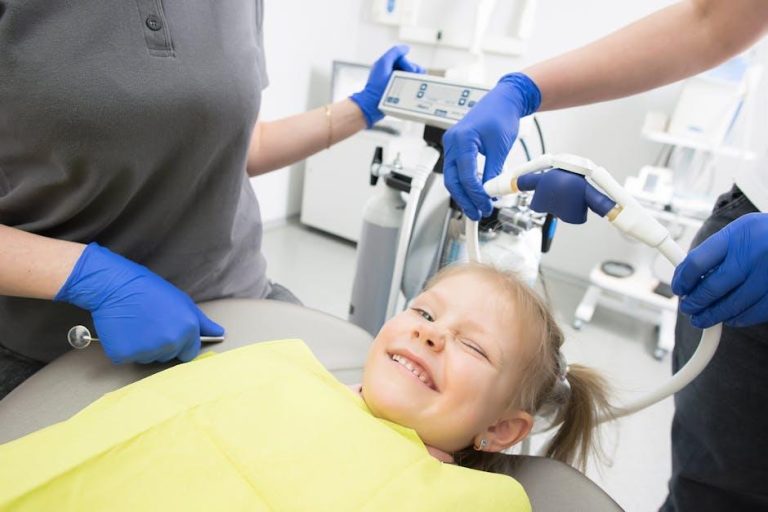1 in 3 Kids Has Dental Problems, Poll Finds – U.S. News & World Report
Recent findings from a nationwide poll, as reported by U.S. News & World Report, reveal a concerning statistic: one in three children in the United States is currently suffering from dental problems. This alarming figure sheds light on the state of pediatric oral health and its implications for families across the country. In this article, we’ll explore the causes behind this trend, the common dental issues affecting kids, and practical tips for maintaining optimal dental health for your children.
Understanding the Poll: What Does the Data Say?
The poll conducted by a reputable health organization surveyed thousands of parents and guardians across the U.S. and unveiled that:
| Statistic | Percentage | Implications |
|---|---|---|
| Children with Dental Problems | 33% | Immediate need for dental interventions |
| Children Who Never Visited a Dentist | 25% | High risk for untreated dental issues |
| Parents Concerned About Costs | 58% | Barrier to routine dental care |
This data highlights both the prevalence of pediatric dental problems and the socioeconomic factors influencing children’s oral health.
Common Dental Problems in Children
Children face a unique set of dental challenges due to their developing teeth and lifestyle habits. These common dental problems include:
- Tooth Decay (Cavities): The most frequent chronic disease among children, caused primarily by sugar consumption and poor oral hygiene.
- Gum Disease (Gingivitis): Early inflammation of the gums due to plaque buildup, which can progress if untreated.
- Tooth Sensitivity: Pain or discomfort from eating hot, cold, or sweet foods, often signaling enamel erosion or cavities.
- Thumb Sucking Effects: Prolonged thumb sucking can cause alignment issues and bite problems.
- Dental Trauma: Injuries from accidents or sports can lead to chipped or displaced teeth.
Why Are Dental Problems So Prevalent Among Kids?
Understanding why 1 in 3 kids faces dental issues involves analyzing several contributing factors:
1. Lack of Routine Dental Care
Many families miss regular dental checkups due to financial constraints or lack of awareness, resulting in undiagnosed and untreated problems.
2. Poor Oral Hygiene Habits
Kids often require guided education on brushing and flossing correctly, and many habits fall short of dental recommendations.
3. High Sugar and Processed Food Intake
Frequent consumption of sugary snacks and drinks fuels harmful bacteria in the mouth that cause tooth decay.
4. Limited Access to Pediatric Dental Specialists
Especially in rural or low-income areas, specialized pediatric dental care is scarce.
Practical Tips to Prevent Dental Problems in Children
Parents and caregivers can take actionable steps to improve their children’s oral health and reduce the risk of dental problems:
- Schedule Regular Dental Visits: First dental visit by age 1 and twice-yearly follow-ups.
- Establish Daily Oral Hygiene Routines: Supervised brushing twice a day with fluoride toothpaste and flossing once daily.
- Limit Sugary Foods and Drinks: Replace juices and soda with water and healthy snacks.
- Use Protective Mouthgear: When playing sports, to prevent dental trauma.
- Educate and Motivate: Make oral care fun with songs, charts, and rewards.
- Discuss Financial Aid Options: Many dental offices accept CHIP, Medicaid, or offer payment plans.
Case Study: Overcoming Dental Challenges in a School Community
In a midwestern elementary school plagued with frequent dental absences, a collaborative initiative between local dentists and the school board introduced:
- Mobile dental clinics providing free examinations
- Educational workshops for parents and children
- Distribution of dental hygiene kits
Within six months, the school reported a 40% reduction in dental-related absences and improved oral hygiene scores among participants. This case highlights the impact of community-based interventions.
What Parents Say: Firsthand Experiences
Many parents shared their concerns about children’s dental health. Sarah, a mother of two, said:
“It was shocking to learn that my 4-year-old already had two cavities. Since we made dental care a fun daily activity and cut back on sweets, her dental visits are much easier, and she’s healthier overall.”
Another parent, Carlos, emphasized the challenges of cost and access but found solutions through local programs:
“Dental care seemed impossible for my family at first. But finding our county’s dental assistance program made it affordable, and now my kids are on track with their dental care.”
Benefits of Early and Consistent Dental Care
Investing in your child’s oral health delivers long-term benefits, such as:
- Prevention of painful tooth decay and infections
- Better speech and chewing ability
- Improved self-esteem and social confidence
- Reduced likelihood of costly dental procedures later
- Creating lifelong healthy habits
Summary Table of Pediatric Dental Problem Prevention
| Prevention Strategy | Benefit |
|---|---|
| Regular dentist visits | Early problem detection |
| Daily brushing/flossing | Reduced plaque and cavities |
| Healthy diet choices | Less acid erosion and decay |
| Protective equipment during sports | Prevent tooth injuries |
Conclusion
The startling finding that 1 in 3 kids in the U.S. has dental problems calls for immediate attention from parents, caregivers, educators, and policymakers alike. Children’s oral health lays the foundation for their overall well-being and quality of life. By adopting practical oral hygiene routines, accessing routine dental care, and fostering education about dental health, we can reverse this trend and promote stronger smiles for future generations. Remember, a healthy mouth leads to a happy child!


